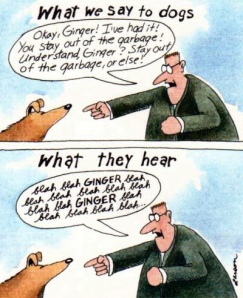Meanings. We create meaning from information we already know, concepts. However, what about the several literal meanings we can make? Things like denotations and connotations may jam up our thoughts about literal meanings, but Sean Hall can help us understand them a bit better in his book, This Means This This Means That. Hall’s book focuses on semiotics and serves almost as a semiotics guide for dummies.
Denotation and connotation can be difficult to understand. Maybe it’s the struggle of remembering which is which or just that we do not know them at all. Hall defines these terms easily in chapter six.
First, let us look at denotations. This is the easiest of the two and pretty much the first step to reading any sentence. Denotations refer to “what is said.” This means the literal, dictionary definition of the word. The comic below introduces denotations and connotations rather well, take a look…
As we see in this comic, Jeremy is telling his father he is not late. This line expresses simply that, it denotes the timeliness of Jeremy. However, the connotation refers to something different.
Connotations are defined by Hall as “how it is said.” This refers more to the mental, emotional, and social connections made with the words. Hall explains that there are literal and non-literal meanings produced through connotations. One easy way I like to think of it is the truth compared to the sarcastic meaning. Since, of course, sarcasm is my second and fluent language.
Let’s look back at the comic above. The connotation of Jeremy’s “I’m not late” can be taken literally, that is, that Jeremy is not late getting home. The non-literal meaning can be more easily understood by his second line, “I’m just not quite as on time as I could be.” This line verbally expresses the connotation of his first line.
Many of these Zits comics illustrate denotation and connotation. If you would like more examples, follow the link to see more: http://zitscomics.com/
Another example is this comic. It perfectly shows the difference between denotation and connotation. We can think of it more easily as what is said compared to what we hear. Just as Hall’s book introduces denotation and connotation with punctuation, we can also think of it in terms of tone and voice. How is it said? Can that directly determine the connotation we make of the phrase?
Since Hall’s book also wants us to decode images with every page, let’s think of denotation and connotation in terms of photography.
On the left is the original photo. We can see a lack of lighting, a boy standing on a brick wall of some sort, and we understand that the day is cloudy and overcast. On the right, the same image is presented of a boy standing on a wall. However, since the lighting has been changed and edits have been made, the photo has a different connotation than that of the original. The connotative meaning I take away from the original deals with depression and possibly suicide. While the edited photo holds a connotation of possibly God and heaven due to the uplifting clouds and sun, or just simply a happier day for the boy.
As Hall explains in This Means This This Means That, “denotation is concerned with what is photographed, while connotation is concerned with how it is photographed.”
And if you still do not understand the difference between denotation and connotation, maybe this corny video will help:
In this GoAnimate video, Captain English! helps to define and exemplify the common troubles in understanding denotation and connotation all while wearing a mask and standing awkwardly in his underwear. But I must admit, if you can get past his strange superhero attire, this video gives concise explanations that are easy to understand as well as ways to remember the two meanings.




I loved the comic because it is a great representation of denotation and connotation. How we say something and how we interpret it are two different things. This is something that makes texting difficult because people can easily interpret what we write wrong since in texting tone is very hard to express. There really isn’t anything anyone can do to make sure what they say and what the person interprets match up.
LikeLike
We create meaning out of almost anything. When creating meaning with words, one may be careful when trying to only portray one meaning. According to Sean Hall, semiotics is when symbols produce multiple meanings. When someone is being sarcastic, it is much harder to tell their tone. Sean Hall uses the example of “I am not a criminal.” However, the text is written in cursive. By writing this specific text in cursive, it makes one believe that the person who wrote this is not a criminal, based off of nice handwriting, which shows their educational background. This relates to denotation and connotation as well. Denotation is what is being said and connotation is the way it is said. This would be the words as the denotation, and the handwriting as the connotation.
LikeLike
First off, very catchy title! Second, this was very interesting to read. I tweeted a picture today that relates to your blog post. It was of a person laying in bed saying, “I am up”, with someone standing in his door way. Then he says, “I’m up, just not actually up.” What he means is that he’s awake, but still laying in bed, not standing up. I also thought it was great you mentioned text messaging in this post, because people take text messages the wrong way all the time. I’ve been in so many situations where someone misinterpreted one of my text messages incorrectly
LikeLike
Yes, it definitely plays in to a lot of society today with text messages and emails. People constantly misinterpret messages and so ensues the fighting. And I do enjoy those comics, nothing is more meaning-filled than words of a teenager.
LikeLike
I liked this post a lot because if someone didn’t understand what the difference between denotation and connotation was before, you made it clear and easy how the two can be different.
I think a point to make is how meanings can get lost over text and social media because we cannot hear the connotation in the speaker’s/sender’s voice.
Just this weekend, my best friend was working on her Halloween costume while I was outside at my job. I sent back a “Lucky you” text and she thought I was being sarcastic and bitter because I did not include an emoticon or “lol” to show connotation behind my meaning.
LikeLike
Thank you! And I definitely see your point with texting. I often throw in an emoji or “lol” because I worry someone will take my text too seriously. However, I find I do the same thing. Some people do not convey their feelings through their messages which poses a problem in deciphering the meaning.
LikeLike
The two photos of the boy standing on the wall really hit the nail on the head for this topic. Just by making a few color changes, the photo portrayed a completely different meaning than the original. Hall explains the difference between what is versus how is, and I think that gives a whole new meaning to the word ‘literal.’ Looking at the edited photograph, it’s clearly not representative of ‘what is,’ but that doesn’t mean that’s not how the subject is, if that makes sense. I really was just captivated by that, and it shows the separation between literal and not literal.
LikeLike
Good explanation of denotation and connotation, you explained it very well and clear that allowed me to better understand the two topics. I liked the comics that you incorporated because they were very clear examples and your discussion further explained them well. I like to think as it as sarcasm it makes it easier for me to understand. it was also interesting how you used photographs to explain denotation and connotation. The connotation would be the editing and what is being represented and the meaning and the denotation would be the man on the ledge being photographed.
LikeLike